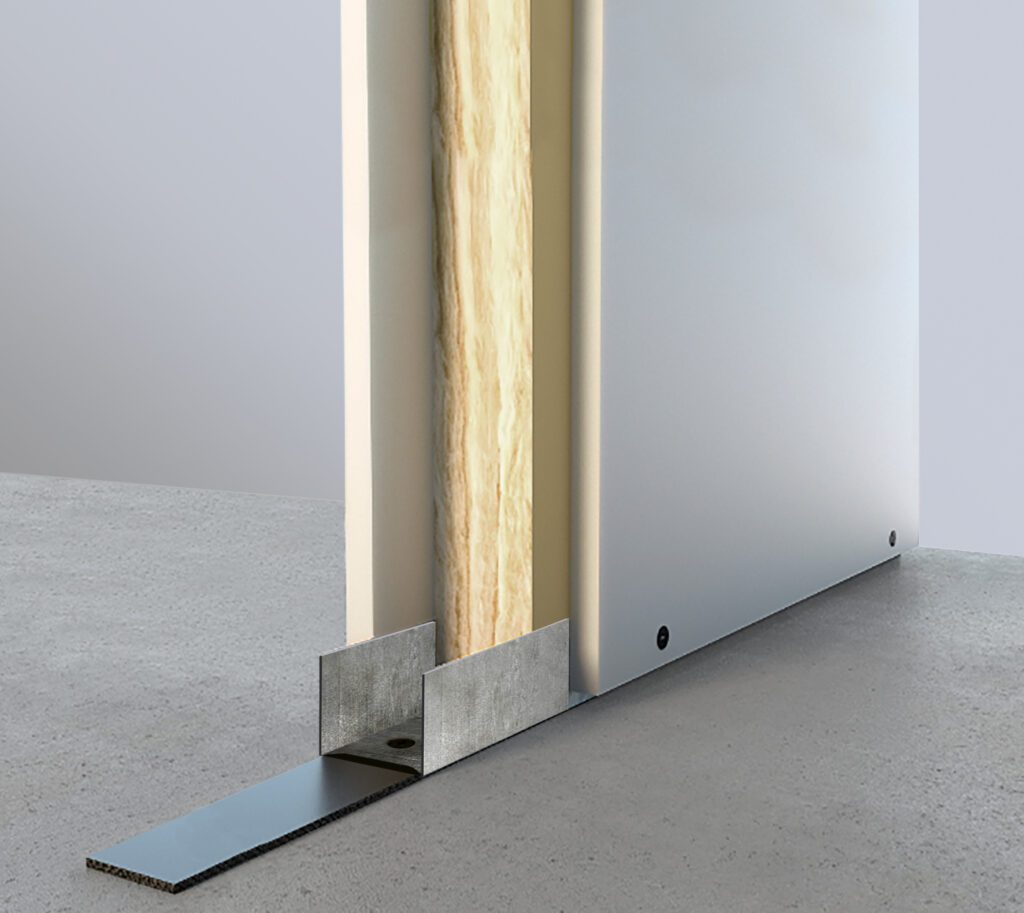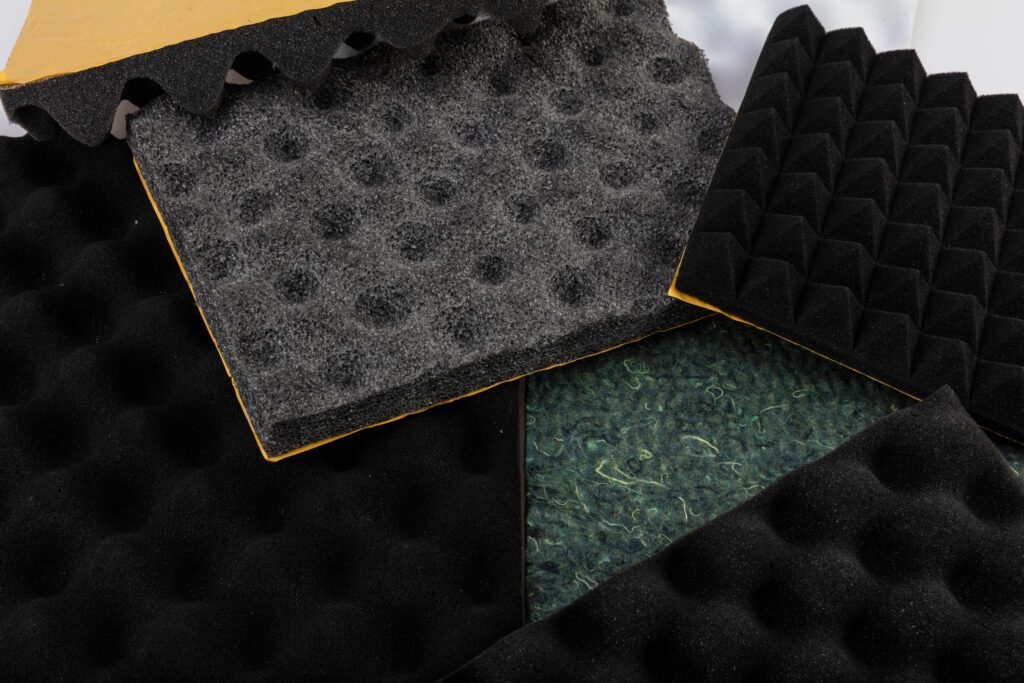Noise is all around us. Road traffic, building sites, neighbours… all noise pollution that can affect our living comfort. Fortunately, sound insulation offers an effective solution for controlling noise propagation and reducing noise pollution. This article will guide you through the essential concepts of acoustic insulation and the appropriate fixing solutions.
How does acoustic insulation work?
Sound can propagate either through vibrations, known as airborne noise, or through the materials of a structure, known as structure-borne noise. To limit this, we use a flexible material that acts as a damper, sandwiched between two rigid materials that act as masses.
In practical terms, how does this work?
As the sound travels, it will first hit the first rigid wall, which will reject some of the sound and allow the rest to pass through. The remaining sound is then transmitted to the softer (insulating) material, which absorbs the sound waves. Then, it bounces back and forth between the rigid walls and the insulation, before finally passing through the second rigid wall in an attenuated state.

The different insulating materials
There are 3 main categories of insulating materials, each with its own advantages and disadvantages :
- Synthetic insulation
Presented in board form and made from PS or PU, synthetic insulation is fairly practical to use. They are well known for their resistance over time, as well as being waterproof and rot-proof. On the other hand, their insulating capacity is slightly lower than that of other materials.
- Mineral insulation
With excellent insulating performance, mineral insulation materials (glass wool, rock wool) are versatile (sound and thermal insulation) and resistant to ageing. On the other hand, these materials are very sensitive to humidity. They are often packaged in rolls, but can also be supplied in panels.
- Natural insulation
Cork, cellulose wadding, flax… There is a wide variety of natural insulating materials. Often available in rolls, flakes or panels, these materials offer excellent acoustic and thermal insulation. Their strength lies in their natural origin, which presents few health risks. However, they are fairly sensitive to water and humidity.

The role of adhesives in soundproofing
Adhesives are one of the most reliable solutions on the market for holding together all the components of a soundproofing product or fixing them to their substrates, thanks to their ease of use, strength and bonding performance.
Our adhesive solutions for fixing soundproofing materials have the following features:
- Powerful, permanent bonding thanks to a high level of adhesion and cohesion;
- Excellent behaviour on materials with low surface tension;
- High resistance to ageing, with no loss of adhesion.
Many of our customers operate in the sound insulation market. ADESIA adapts its offer according to the materials and constraints involved, prescribing the adhesive, weight and protector best suited to the specific needs of each user.
Interested in our solutions? Contact our teams and discuss your requirements!






